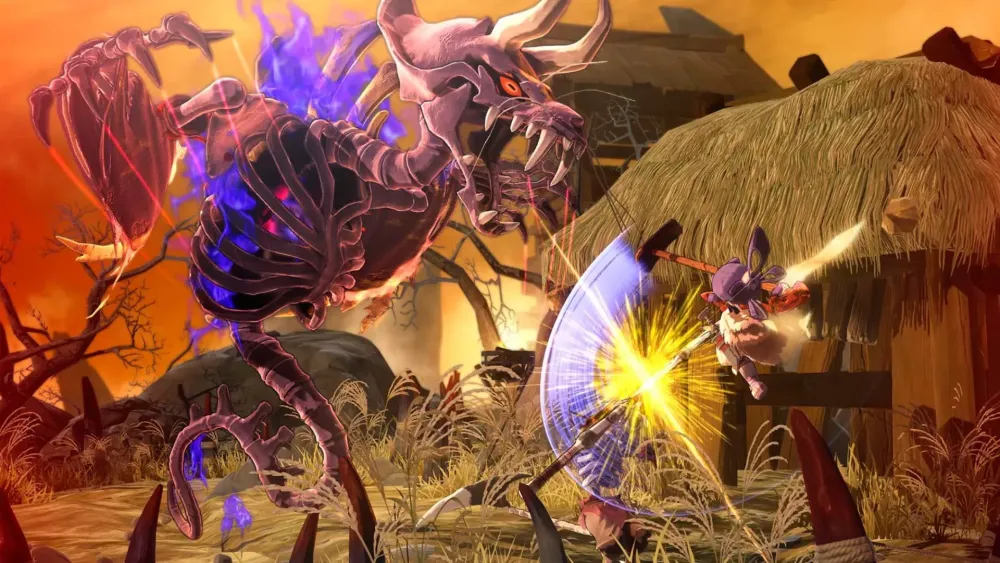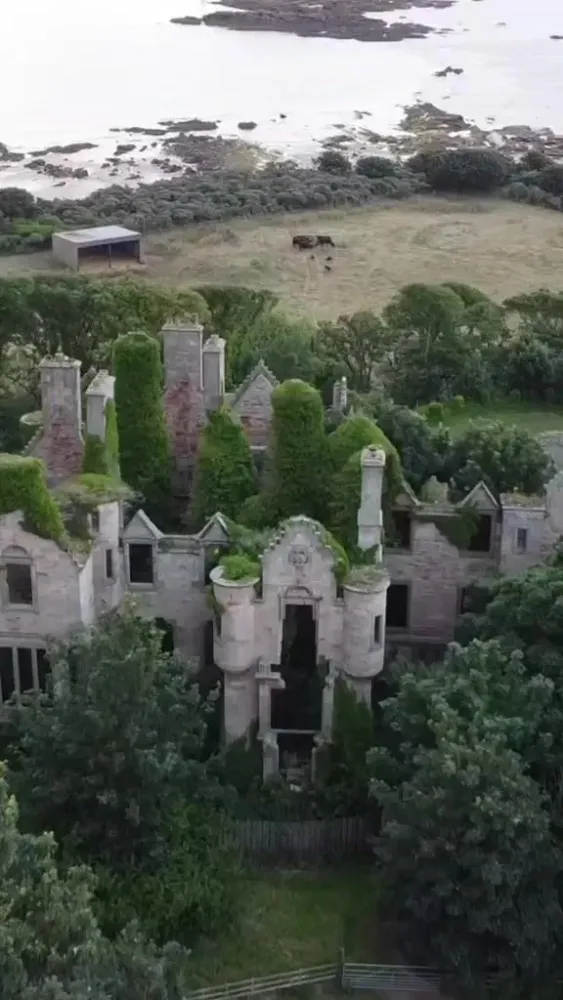Your cart is empty
The Moons of Ruin: Exploring the Mysteries of OSRS

The Moons of Ruin in Old School RuneScape (OSRS) present a captivating aspect of the game’s lore and world-building. These enigmatic celestial bodies not only enhance the mystical atmosphere of Gielinor but also serve as a key element in various quests and narratives. Players are drawn to the mysteries they hold, making them a fascinating topic of exploration for both new and veteran players alike.
The lore surrounding the Moons of Ruin is rich and complex, deeply intertwined with the history and mythology of Gielinor. Two primary moons, known as the white moon (the Moon of the Gods) and the black moon (the Moon of Ruin), are central to the game’s celestial narrative. The white moon is often associated with light, hope, and divine intervention, while the black moon embodies chaos, darkness, and destruction.
Historically, the Moons of Ruin have been linked to significant events in the game’s timeline, including the God Wars and the rise and fall of various deities. The influence of the moons can be seen in the powers of certain magic spells and the abilities of various creatures and characters within OSRS. For instance, Zamorak, a prominent god in the game, is often connected to the black moon, which symbolizes his chaotic nature and his quest for power.
Players can also observe the moons’ effects during specific in-game events, such as the “Moonlight” effect that enhances certain abilities or the “Darkness” that may hinder progress in quests. The changing phases of the moons occasionally play a role in quest mechanics, such as unlocking special areas or activating unique items tied to their celestial influence. This dynamic adds layers of strategy and intrigue to gameplay, encouraging players to pay attention to the cosmic cycles.
Moreover, the lore of the Moons of Ruin is not static; it evolves with updates and new content released by the developers. Quests and storylines often expand upon the existing mythology, introducing new characters, creatures, and artifacts linked to the moons. This continuous development keeps the lore fresh and engaging, allowing players to delve deeper into the rich tapestry of Gielinor’s history.
In conclusion, the Moons of Ruin are more than just celestial bodies; they are integral to the lore and gameplay of OSRS. Understanding their significance enhances the overall experience, providing players with a deeper appreciation for the game’s narrative and world-building elements.
How the Moons Affect Gameplay in OSRS

The moons in Old School RuneScape (OSRS) add a unique layer of depth to gameplay, influencing various mechanics that players need to consider during their adventures. The two prominent moons, Guthix’s moon and Seren’s moon, have distinct effects that can significantly alter player experiences.
Here’s how the moons affect gameplay:
- Time of Day: The phases of the moons can change the in-game time, impacting certain activities. For instance, certain quests or events might only trigger at specific lunar phases.
- Spawn Rates: Certain creatures and items may spawn more frequently depending on the lunar cycle. Players planning to hunt or gather resources should keep an eye on the moons to maximize their efficiency.
- Combat Bonuses: Players can receive combat bonuses based on the alignment of the moons. For example, some spells might gain an enhanced effect when cast under a certain moon phase.
- Skill Training: Certain skills might experience changes in experience gain based on the moon. This can encourage players to time their training sessions to coincide with favorable lunar conditions.
Understanding these mechanics allows players to strategize their gameplay better, making the moons not just a visual aspect but a fundamental part of navigating the world of Gielinor.
Locations and Events Related to the Moons
Exploring Gielinor‘s landscapes reveals various locations and events intimately tied to the moons. These areas are not only picturesque but also offer unique quests, challenges, and lore that enrich the OSRS experience.
Here are some key locations and events associated with the moons:
| Location | Description | Related Events |
|---|---|---|
| Moonlight Grove | A serene area bathed in the light of the moons, ideal for gathering herbs. | Full Moon Herbalism Event |
| Guthix’s Altar | A sacred site dedicated to the god Guthix, where players can recharge prayer points. | Guthix’s Blessing Ceremony |
| The Hall of Memories | A place where players can relive past events and gain insights into their character’s journey. | Moonlit Storytelling Sessions |
| Seren’s Temple | A mystical temple filled with lore about Seren and her connection to the moons. | Ritual of the Moons Quest |
These locations not only serve as quest hubs but also allow players to immerse themselves in the lore and mysteries of the moons. Engaging with these events can lead to rare rewards and a deeper understanding of the game’s narrative.
5. Tips for Navigating Moon Phases in OSRS
Understanding and navigating the moon phases in Old School RuneScape (OSRS) can significantly affect your gameplay, especially in quests and activities that rely on lunar cycles. Here are some practical tips to help you make the most out of the moon phases:
- Know the Moon Phases: Familiarize yourself with the different phases of the moon—New Moon, Waxing Crescent, First Quarter, Waxing Gibbous, Full Moon, Waning Gibbous, Last Quarter, and Waning Crescent. Each phase can influence specific quests and activities.
- Use a Lunar Calendar: Consider keeping a lunar calendar handy. This will help you track the current moon phase and plan your activities accordingly. You can find various OSRS calendars online that show the moon phases.
- Join Events: Participate in in-game events that correlate with moon phases. These events can offer unique rewards and experiences, making them worth your time.
- Team Up: Work with friends or clan members who are knowledgeable about the moon phases. They can share insights and strategies that can enhance your gameplay experience.
- Experiment: Don’t hesitate to experiment with different activities during various moon phases. You might discover new strategies or find that certain phases are better suited for specific tasks.
By following these tips, you’ll become more adept at navigating the complexities of the moon phases in OSRS, unlocking new opportunities and enhancing your overall gameplay experience.
6. Community Insights and Theories on the Moons
The Old School RuneScape community is vibrant and full of creative thinkers, and when it comes to the moons, the theories and insights shared can be quite fascinating. Players often engage in discussions about the potential impacts of the moons on gameplay and lore. Here are some notable community insights and theories:
- Influence on Magic: Some players believe that the moon phases affect spell casting, particularly those related to lunar magic. Theories suggest that specific phases may enhance or weaken certain spells.
- Quest Clues: Many players have noted that clues in quests often hint at moon phases. For instance, certain quests might require players to perform actions during specific moon cycles to progress, leading to lively discussions on forums.
- Mythical Creatures: The community has hypothesized that certain monsters or creatures may appear or become stronger during particular moon phases. This leads to speculation about hidden lore and gameplay mechanics.
- Historical References: Players often draw parallels between OSRS moon phases and real-world lunar cycles, discussing how these may have influenced the game’s design and lore.
- Shared Experiences: Players frequently share their personal stories and experiences related to moon phases, which can provide valuable insights and make the community feel more connected.
By engaging with the community and exploring these theories, players can deepen their understanding of the moons in OSRS, enriching their overall gaming experience.
The Moons of Ruin: Exploring the Mysteries of OSRS
The moons of Ruin in Old School RuneScape (OSRS) present a captivating blend of lore, gameplay mechanics, and exploration. These celestial bodies, known as the *white moon (also called Arrav) and the black moon (also referred to as Doom), play essential roles in the narrative and world-building of Gielinor. Players often find themselves intrigued by the myths and stories surrounding these moons, as they unlock various aspects of the game.
Historically, the moons have been tied to significant events within the RuneScape universe. They are believed to influence the following:
- Magic: The moons are said to affect magical spells, altering their potency and effects based on their phases.
- Quests: Many quests delve into the lore of the moons, often requiring players to gather specific items or defeat unique enemies related to them.
- Skills: Certain skills, particularly Prayer and Magic*, can be influenced by the moons, offering players bonuses during specific lunar phases.
In addition to gameplay mechanics, the moons are woven into the rich tapestry of RuneScape’s mythology. Players can uncover secrets through exploration and interaction with NPCs, revealing insights into the history and significance of these celestial entities.
The influence of the moons extends beyond mere lore; they serve as a reminder of the interconnectedness of the game’s elements, inviting players to engage deeply with the world around them.
In conclusion, the moons of Ruin represent a fascinating aspect of OSRS, enhancing both the gameplay experience and the broader narrative. As players continue to explore their mysteries, the future of the moons within the game looks promising, with potential for new quests, lore, and mechanics that could further enrich the world of Gielinor.
